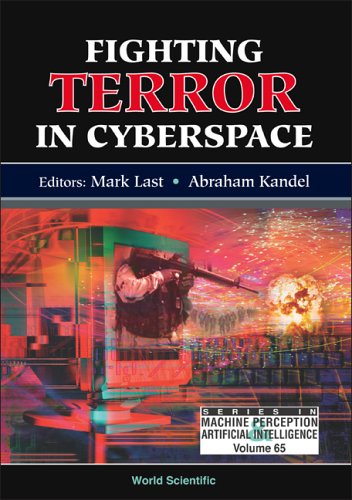Mark Last, Abraham Kandel9789812564931, 981-256-493-4
Table of contents :
Contents……Page 12
Preface……Page 6
1.1.1 Evolution of Cyberspace and the Internet……Page 18
1.1.2 A Paradigm Shift and Exponential Grown in Cyberspace……Page 22
1.2 Terrorist Use of the Internet……Page 24
1.2.1 Terrorist Use of the Internet for Covert Communications……Page 25
1.2.2 Finding Terrorist E-Mail……Page 29
1.2.3 The Impact of Encryption……Page 30
1.2.4 Non E-mail Techniques……Page 33
1.3.1 Potential Targets for Future Attacks……Page 34
1.3.2 Logistics for Terrorist Operations……Page 35
1.3.3 Technical Data for Terrorist Operations……Page 36
1.4 Terrorist Web Sites……Page 37
1.4.1 Platform for Terrorist Propaganda……Page 38
1.4.2 Platform for Terrorist Recruitment and Fundraising……Page 39
1.5 Terrorists and Cyber-Terrorism……Page 41
Bibliography……Page 44
2.1 The New Trends of Terror……Page 46
2.2 Information Terrorism……Page 48
2.3.2 The Cyberspace as Cyber-Jihad……Page 50
2.3.3 The “rends in the Information Age……Page 51
2.4 Conclusion……Page 52
Bibliography……Page 56
3.1 Introduction: Who is Hiding in Cyber Caves?……Page 58
3.2.1 Taxonomy of Data Mining Methods……Page 60
3.2.2 Data Mining Needs and Challenges for Cyber Security and Cyber Intelligence……Page 63
3.3.1 Link Analysis……Page 64
3.3.2 Information Agents……Page 66
3.3.3 Trend Discovery……Page 69
3.3.4 Real-Time Data Mining……Page 70
3.3.5 Input-Output Analysis of Software Systems……Page 73
3.4 Summary……Page 75
Bibliography……Page 76
4.1 Introduction……Page 80
4.2.1 Learning Phase……Page 83
4.2.2 The Detection Phase……Page 85
4.3 Summary……Page 86
Bibliography……Page 90
5.1 Introduction……Page 92
5.2 Content-Based Methodology for Anomaly Detection: Review……Page 93
5.2.1 Learning the Normal User Behavior……Page 94
5.2.2 Detecting Abnormal Users……Page 95
5.4 TDS Architecture……Page 96
5.4.2 Vectorization……Page 98
5.4.4 Detection……Page 99
5.5 Performance Measures……Page 100
5.6 System Evaluation……Page 101
5.7 System Deployment……Page 102
5.8 Summary……Page 104
Bibliography……Page 106
6.1 Introduction……Page 108
6.2 Creating the Centroids……Page 111
6.3.1 Clustering……Page 116
6.4 The Experiment……Page 117
6.5 Summary……Page 118
Bibliography……Page 120
7.1 Introduction……Page 122
7.2.1 The Impact of 9/11……Page 123
7.3.1 Characteristics of Terror (Not Only Terrorist) Financing……Page 124
7.3.2 Why and How Do Terror Groups Launder Money……Page 125
7.4.1 A Strategy for Fighting Terror Financing……Page 127
7.4.2 Information Received from the Private Sector……Page 128
7.4.3 The Role of the FIU……Page 129
7.4.4 IT Analysis Tools at FIUs……Page 130
7.5 Information Available – Possible Future Developments……Page 131
8.1 Introduction……Page 134
8.3 Selected Applications of Web Document Classification……Page 136
8.3.1 Automatic Web News Extraction……Page 137
8.3.3 Organization of Web Document Collections……Page 138
8.3.4 Multi-Lingual Applications……Page 139
8.4.1 Traditional Text Models……Page 140
8.4.2 Web Document Models……Page 141
8.5.1 Graph Structure……Page 142
8.5.2.2 Smart Extraction……Page 145
8.5.3 Frequent Sub-Graph Extraction Problem……Page 146
8.6.1 Representation and Classification……Page 147
8.6.2 Web Document Representation Example……Page 149
8.7.1 About Document Collection……Page 153
8.7.2 Preprocessing of Documents in Arabic……Page 154
8.7.3 Experiment and Evaluation of Results……Page 155
8.8 Conclusions……Page 157
8.9 Acknowledgment……Page 158
Bibliography……Page 160
Appendix A Useful Sources……Page 164
Appendix B Terrorist Web Sites — Examples……Page 166
Appendix C About the Authors……Page 174
Index……Page 182

Reviews
There are no reviews yet.